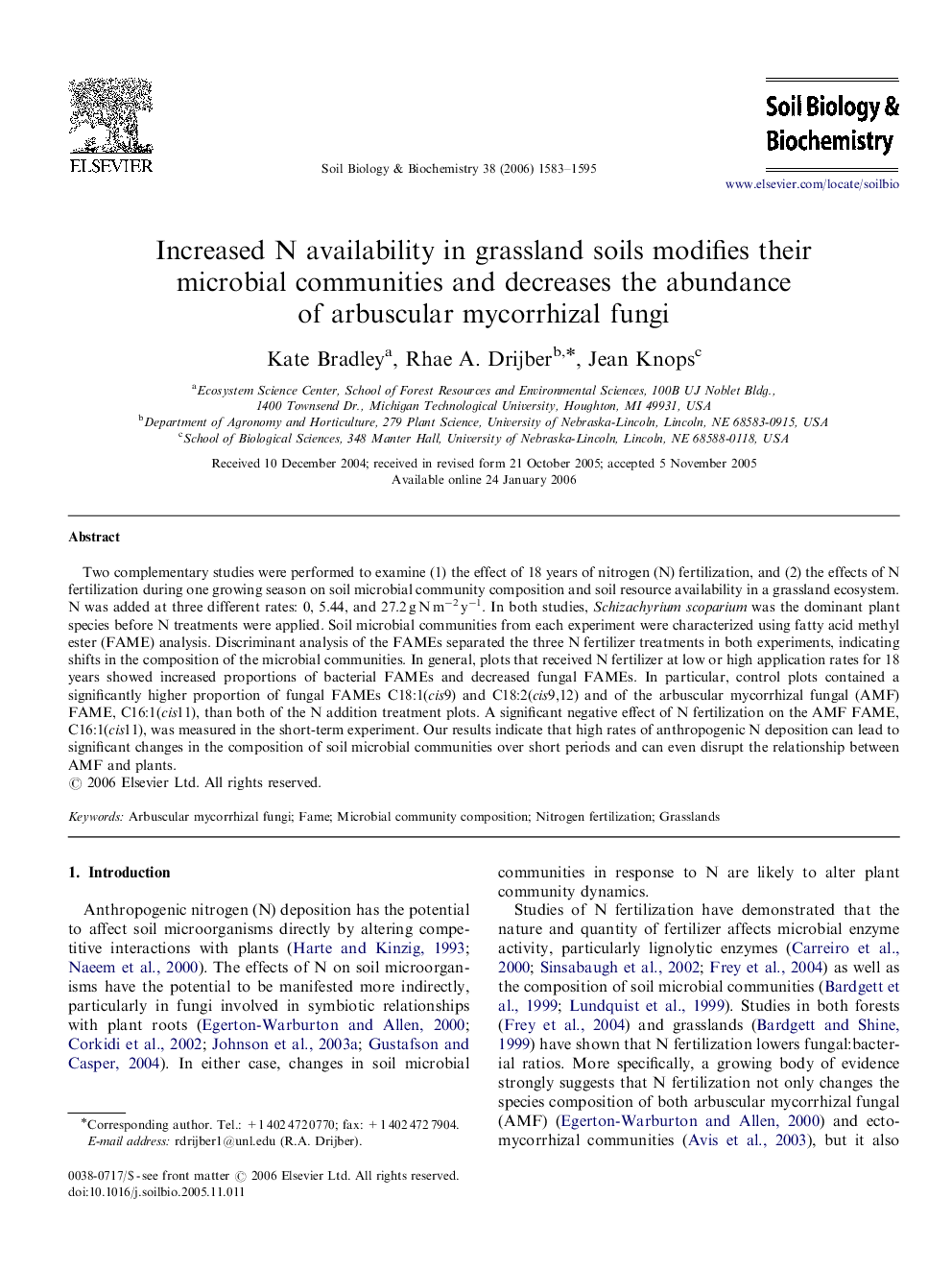| Article ID | Journal | Published Year | Pages | File Type |
|---|---|---|---|---|
| 2026562 | Soil Biology and Biochemistry | 2006 | 13 Pages |
Two complementary studies were performed to examine (1) the effect of 18 years of nitrogen (N) fertilization, and (2) the effects of N fertilization during one growing season on soil microbial community composition and soil resource availability in a grassland ecosystem. N was added at three different rates: 0, 5.44, and 27.2 g N m−2 y−1. In both studies, Schizachyrium scoparium was the dominant plant species before N treatments were applied. Soil microbial communities from each experiment were characterized using fatty acid methyl ester (FAME) analysis. Discriminant analysis of the FAMEs separated the three N fertilizer treatments in both experiments, indicating shifts in the composition of the microbial communities. In general, plots that received N fertilizer at low or high application rates for 18 years showed increased proportions of bacterial FAMEs and decreased fungal FAMEs. In particular, control plots contained a significantly higher proportion of fungal FAMEs C18:1(cis9) and C18:2(cis9,12) and of the arbuscular mycorrhizal fungal (AMF) FAME, C16:1(cis11), than both of the N addition treatment plots. A significant negative effect of N fertilization on the AMF FAME, C16:1(cis11), was measured in the short-term experiment. Our results indicate that high rates of anthropogenic N deposition can lead to significant changes in the composition of soil microbial communities over short periods and can even disrupt the relationship between AMF and plants.
